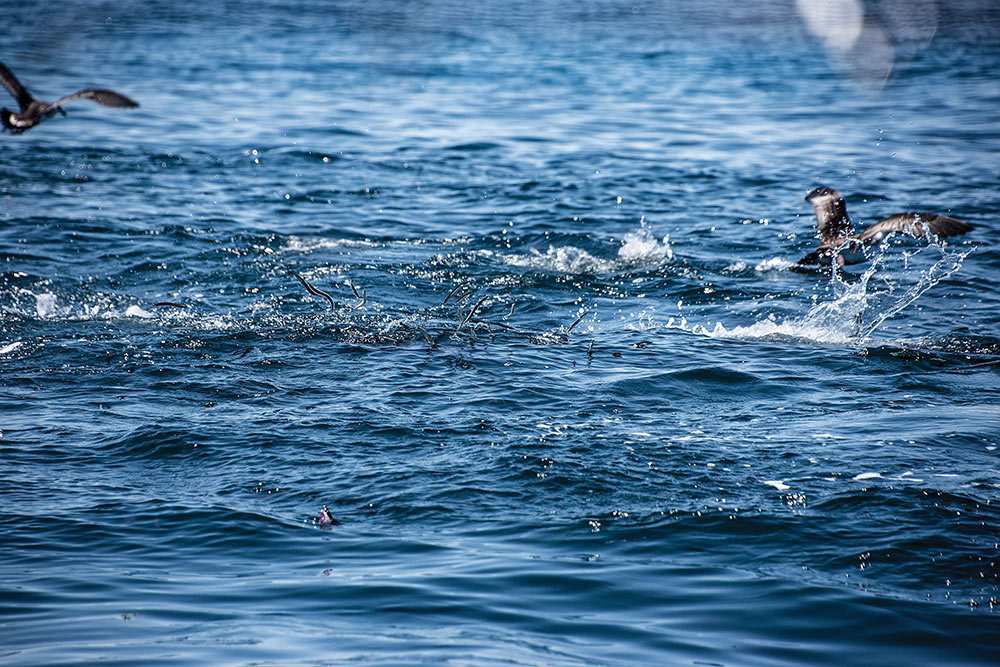
While surf-casting a vacant beach in Jersey last November, I posted a picture on Instagram of a sand eel I found washed up in the surf line. Right after, the social media fishing sites went wild, and the beaches were packed with surf casters the next day. That even made the news! Clearly, seasoned anglers know the draw of those small baitfish and anticipate serious action when they show up.
Shimmering like sparkling diamonds in the sunlight, schools of undulating sand eels quickly get the attention of hungry game fish along the northeastern coast. They’re covert burrowers that root down in the sand and pebble beaches. You hardly ever see them, but when sand eels abandon their hideouts, they ignite a red-hot bite. Suddenly, an array of species from fluke to giant bluefin tuna tracks their movements with the sole purpose of chowing down.
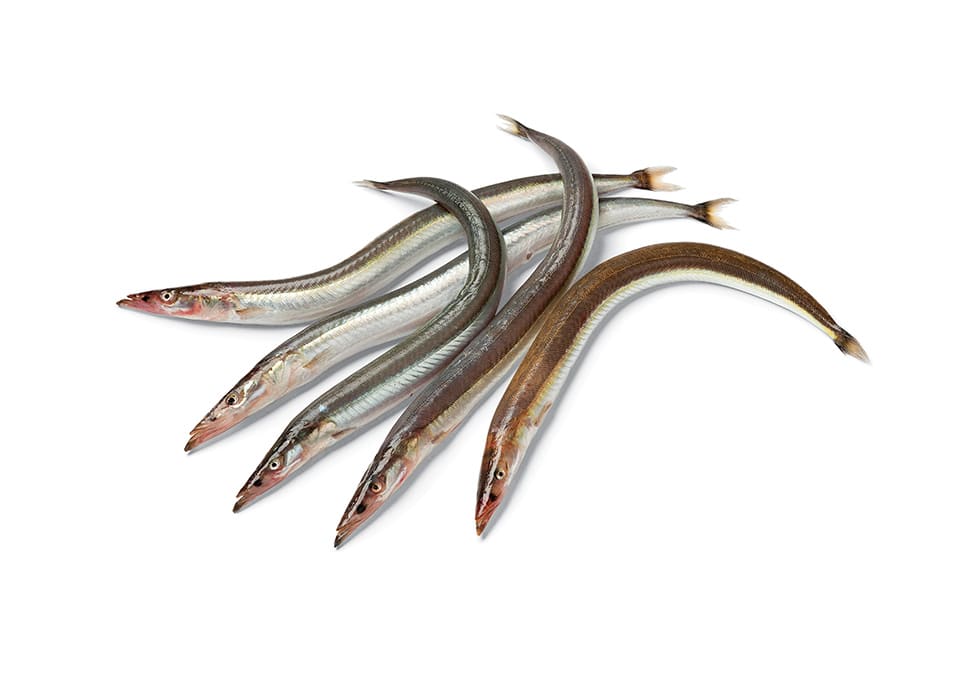
Meet the Sand Eel
Commonly referred to as sand lances, sand eels are slender fellows — typically 3 to 5 inches long — that can grow to about 9 inches, but they are not members of the eel family; they actually have more in common with spiny- ray finned fishes like perch or stargazers. Their range along the Eastern Seaboard spans from Northern Labrador and Hudson Bay down to Cape Hatteras, and they flit back and forth between the back bays and the continental shelf, as much as 80 miles offshore.
The ultimate forage food for game fish in colder waters (they prefer temps in the 58- to 48-degree range), sand eels tend to run in the Northeast from May through December.
During the summer months, they inhabit the back-bay marshes and, as water temperatures drop, migrate out in the fall and gradually head offshore as winter sets in. At all points in between, they are pursued relentlessly by game fish, but they most definitely are not easy prey and hold many tricks up their sleeve, the least of which is the ability to burrow into the sand within seconds with sharp pointed snouts and elongated bodies to bury and conceal themselves. Then they resemble mini periscopes, poking their heads out of the sand. The key to dialing in a sand eel bite is to effectively mimic them.
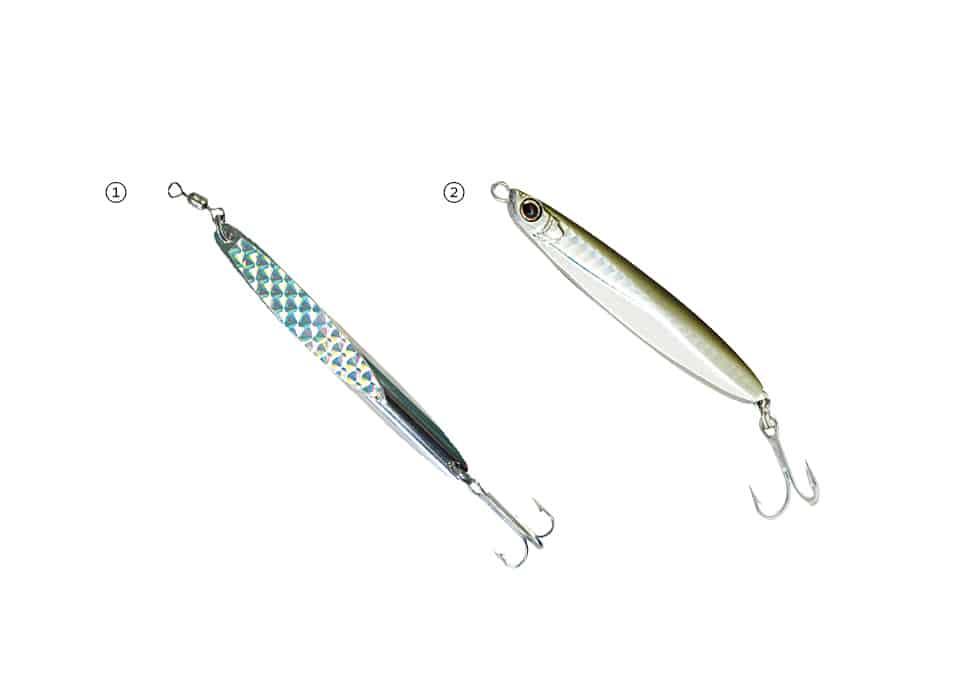
[2] Coltsniper Jig – Designed for long casts to busting fish, these lifelike Shimano jigs have plenty of action and come in eight weights. Courtesy Manufacturers
Mass Exodus
When the Northeast thaws during spring and finally enjoys a warm trend, sand eels colonize the back bays, but they push out en masse during late summer and fall, and lie thick just outside the breaking waves as they move back to the open sea. As the sun rises, sand eels unearth themselves and poke their heads up, exiting the seafloor and rising in the water column to feed.
Striped bass, bluefish and fluke are the predominant inshore species foraging on the massive clouds of sand eels then. Anglers understand that stripers pick them off in the surf and target them within the 3-mile exclusive economic zone just as the slender baitfish flutter along the bottom, often joined by perennially ravenous bluefish, gorging themselves in greedy fashion.
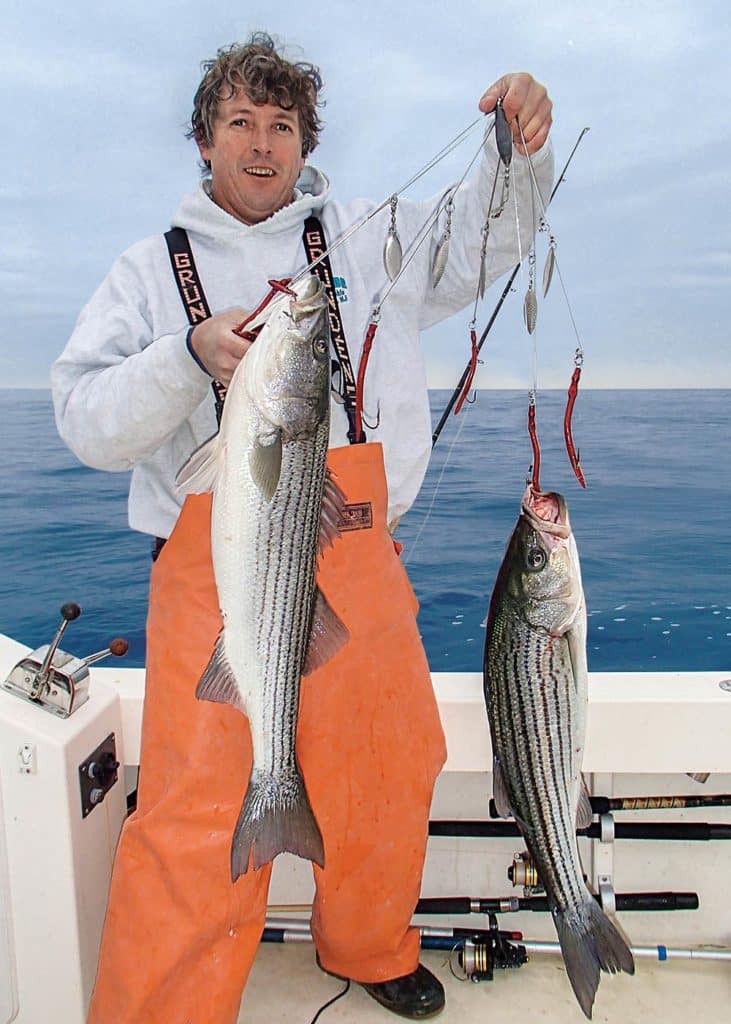
Open-Water Tactics
A popular tactic to cash in on the unearthing of the eels is to troll umbrella rigs with eight to 12 green, red or black 5-inch tubes just a few feet above the seafloor during dawn and dusk, from beefy trolling outfits with either braid or wire line.
Trollers drag the umbrella rigs at 2 to 3 knots, often kicking the boat in and out of gear if the bite is slow to simulate the eels moving up and dropping back to the bottom, before accelerating again.
When the bass and blues are feeding aggressively, jigging is a great option. Letting a metal lure such as a No. 4 Deadly Dick quickly drop to the bottom and reeling it up at a moderate pace simulates the natural movements of the sand eels to perfection and draw strikes from hungry predators. Surf casters frequently pull tried-and-true Needlefish lures across the surface, or drag Ava 007 or A27 jigs with green or black rubber tails along the sandy bottom to garner bites, while others call on lifelike soft plastics such as Tsunami’s Holographic Sand Eel for the task.
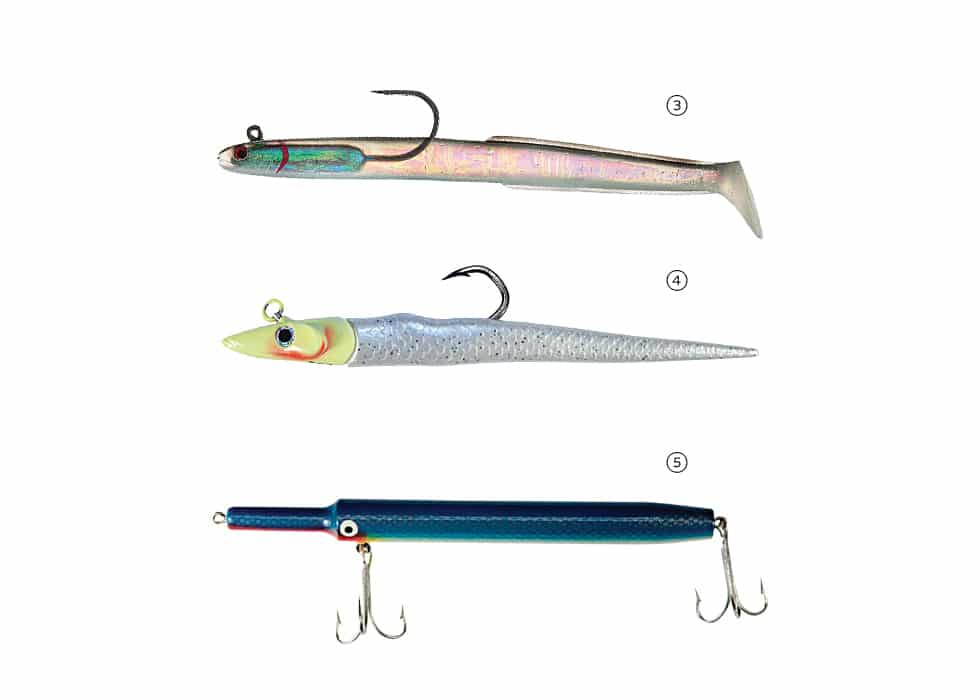
[4] Tsunami Sand Eel – The built-in swimming action and holographic finish make this faux sand eel as irresistible as the real deal.
[5] Tuna Harness Jig – This jig head and soft-plastic tail combo from Hogy Lures is lethal on tuna, bonito, albies, stripers and blues. Courtesy Manufacturers
Backwater Action
During summertime, sand eels choke the shallow back bays in New Jersey and Long Island Sound, and summer flounder jump on them as they flutter between the marshes and drift in and out of inlets with the tides. Backwater anglers rely on light to medium tackle to bounce ⅜- to ½-ounce lead-heads tipped with a 4-inch Berkley Gulp! Sand Eel or Sinking Minnow, Fin-S Fish, or a frozen sand eel — with epoxy fly teasers on 1/0 to 2/0 Siwash hooks 16 inches above the lure — along the bottom to trigger attacks from hungry fluke.
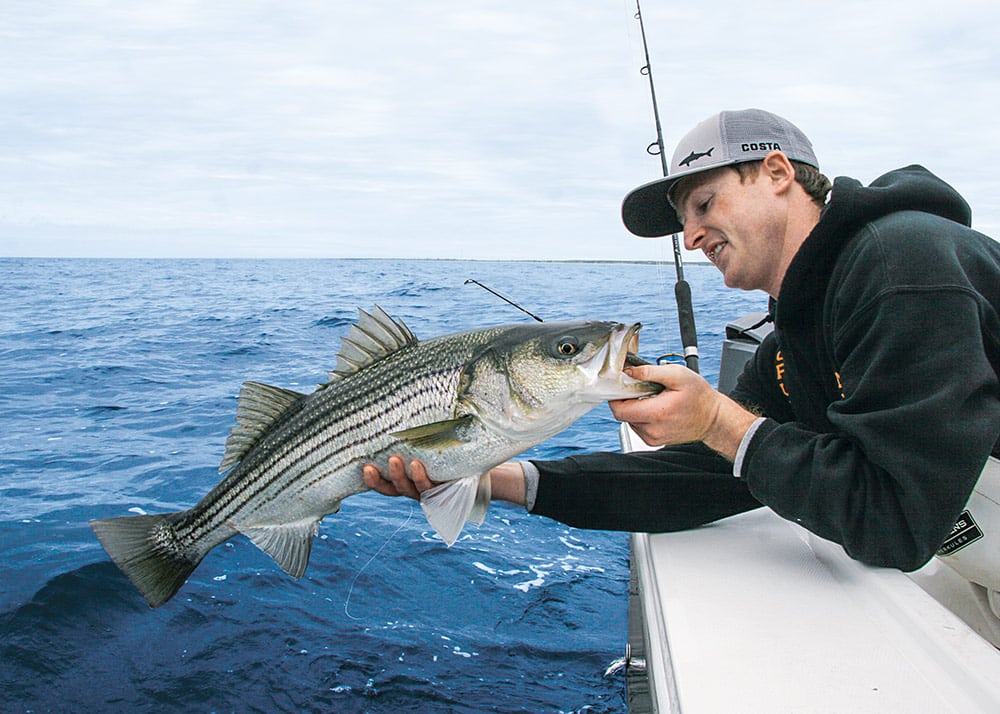
Autumn Pelagics
When the word gets out that sand eels are congregating in big clouds, charter captains are on high alert. “There are two ways we know sand eels are around,” says Capt. Adam Sherer of Waterman Charters. “We either see the dark masses in the water, or we reel in a tuna or striped bass, and it starts puking the baitfish by the dozens.
“We rarely mark sand eels when tuna fishing in the fall and winter; that’s usually when they’re thinly scattered on the surface,” Sherer says. “As long as the sand eels are around in good numbers, we can expect great fishing; however, mimicking their profile is not always necessary. I often toss a big stickbait and twitch it slowly on the surface, in the middle of a cloud of sand eels. The baitfish attract predators, and the lazy movement of a big bait in the middle of them gets the aggressive strike out of a bluefin.”
When sand eels are deeper and tuna are feeding below the surface, a RonZ, Hogy Harness jig, or a Shimano Butterfly jig with a thin profile is just the ticket. For best results, drop the lure and jig it up the water column by snapping the rod tip to best emulate the fleeing sand eels.
If there is a topwater bite — for instance, when you see false albacore or tuna blowing up on a school of sand eels — use a run-and-gun approach to find the fish, then cast a Hogy Epoxy jig, Deadly Dick, Williamson Gomoku jig or similar slim metal, and rip it as fast as you can reel to attract the game fish away from the bait school and convince them to hit your artificial.
For reasons not yet clear, some years sand eel schools are thick and others they are practically absent. When they are present, those little mighty mites have a major and immediate influence on the success of anglers, which is why many will quickly alter their schedules and tailor their approach accordingly to target their favorite game species inshore and nearshore.
SWS Planner – Northeast/Mid-Atlantic Sand Eel Runs
What: Striped bass, false albacore, fluke, bluefish, tuna, bonito
When: Spring through fall
Where: New England’s Gulf of Maine to Cape Hatteras, North Carolina
Who
These captains know where and when to zero in on fish feeding on sand eels:
New Jersey – Capt. Adam Sherer
609-548-1584
watermanfishing.com
Massachusetts – Capt. Bobby Rice
508-487-3767
fishreeldeal.com
SWS Tackle Box – Northeast/Mid-Atlantic Sand Eel Runs
Rod: 6- to 7-foot moderate to fast-action spinning or conventional, 30- to 50-pound-class trolling
Reel: 4000- to 12000-class spinning, 16- to 20-class conventional, 30- to 50-pound-class trolling
Lures: RonZ, Hogy Tuna Harness Jig, Deadly Dick, Tsunami Sand Eel, Boone Needlefish, Shimano Coltsniper Jig, Ava jigs with tails, AOK T-Hex, Felmlee eels
Line: 14- to 50-pound braid, 25- to 40-pound fluoro leader









